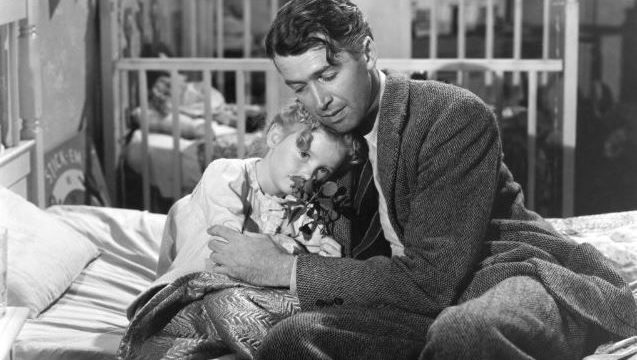A few years ago, I had something of a minor revelation.
The movie A Christmas Story is set in the year 1940. That warm, finely detailed modern holiday classic came out in 1983 but has none of the stylistic marks of the WarGames and Top Gun era of Hollywood movies. Narrated my a grown man looking back on his childhood, it is, rather, covered in that bittersweet glow of nostalgia.
And why does the narrator (Older Ralphie) choose to remember this particular Christmas out of all his childhood Christmases?
I’ll tell you why.
Because it was his last Christmas of relative peace and prosperity before World War II changed everything forever.
Think about it.
His next Christmas would be December 25, 1941, only few weeks after the attack on Pearl Harbor.
Pretty soon, people from his neighborhood and his hometown would be enlisting to fight overseas. Every night he’d probably hear about the casualties on the radio, instead of listening to the adventures of Little Orphan Annie. Wartime rations would mean austerity and rations and saving for war bonds and budget-watching for everyone, so Christmas would be even more scarce and less ornate — no Red Ryder BB guns, in all likelihood. FDR, father figure to a nation, who would have been president for as long as Ralphie would be able to remember, dies in 1945.
By the time the war ended, Ralphie wouldn’t be old enough to enlist, but he would be a teenager, long past the age of believing in Santa. And soon to be a man. He might have to start working, maybe drop out of school.
In short, the Christmas in A Christmas Story is the last holiday season of pure, unadulterated childhood for him. The final moments of flickering Christmas lights, and he didn’t even realize it at the time. It was only in retrospect that it became clear what he had and what he had lost.
Thinking on Christmas movies this time of year, that particular realization struck me again. So many of our cultural Christmas classics — It’s a Wonderful Life, or Miracle on 34th Street, or Meet Me in St. Louis, to somewhat lesser known films like Christmas in Connecticut, The Bishop’s Wife, or It Happened On Fifth Avenue — are products of World War II or the immediate aftermath.
That era, circa 1942 to 1947, was a time when family, transformed dramatically by the changes of WW2, was something on people’s minds. A soldier on the front might have just been a high school kid before enlisting and being shipped off to shoot and get shot at, and would no doubt miss his family while he huddled in a foxhole. The returning soldier would have a whole different set of expectations — coming home from a multi-year near death experience, to a shortage of houses and a baby boom, family would symbolize something sacred, a new start, a new beginning.
At the end of the day, Christmas movies are essentially about family. Whether it’s the traditional family embodied by Meet Me in St. Louis or the makeshift non-traditional families portrayed in films like It Happened on Fifth Avenue, where various squatters congregate in an empty Manhattan mansion pretending to be relatives, the family unit is always key.
The greatest of Christmas movies always have to have that bittersweet note I mentioned above. Because family is bittersweet, and anyone who tells you otherwise is not telling you the whole story — even if you love every member of your family completely and unconditionally, that still means you’ll have to come to peace with the reality of losing them one day. And there’s nothing more bitter or more sweet than that. It’s a Wonderful Life gets that, and that’s why it’s the greatest of Christmas movies. George Bailey is completely and unambiguously happy at the end of that film, but the path along the way had to come with real pain and loss. People like Frank Capra and Jimmy Stewart realized that, people who gave up their homes before the war to risk their lives in pursuit of protecting their homes and the homes of others. That combination — the life, the death, the home, the struggle for the home — is embodied in our deepest, truest understandings of Christmas.
Since that era, there have certainly been good and at times even great Christmas movies. But I fear that we’ve lost something in them. We’ve gotten hooked on the sentimentality and the external trappings signifying “joy.” We’ve embraced “family and the home” but not what they really mean. It’s notable, perhaps, that the 1994 remake of Miracle on 34th Street refashioned the original into a film about religious faith…the family, the home (in all their forms) may be taken for granted in an age when we live in relative comfort and security and don’t fear that it all could be lost. My great-uncle wrote letters to his mother when he was in his early twenties, fighting in the black sands of the Pacific. My mother gets antsy when if I don’t text her for a few days, and we live in the same city.
As the home and the family has changed, so has Christmas, and so has the Christmas movie. What we think of as “the Christmas movie” might simply be, in essence, just a reflection of a particular time and a place, that, like Ralphie’s childhood in A Christmas Story, exists now mostly in memory.
Wishing you and yours a very merry Christmas, wherever you are, no matter where your home is.

